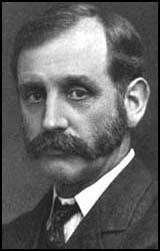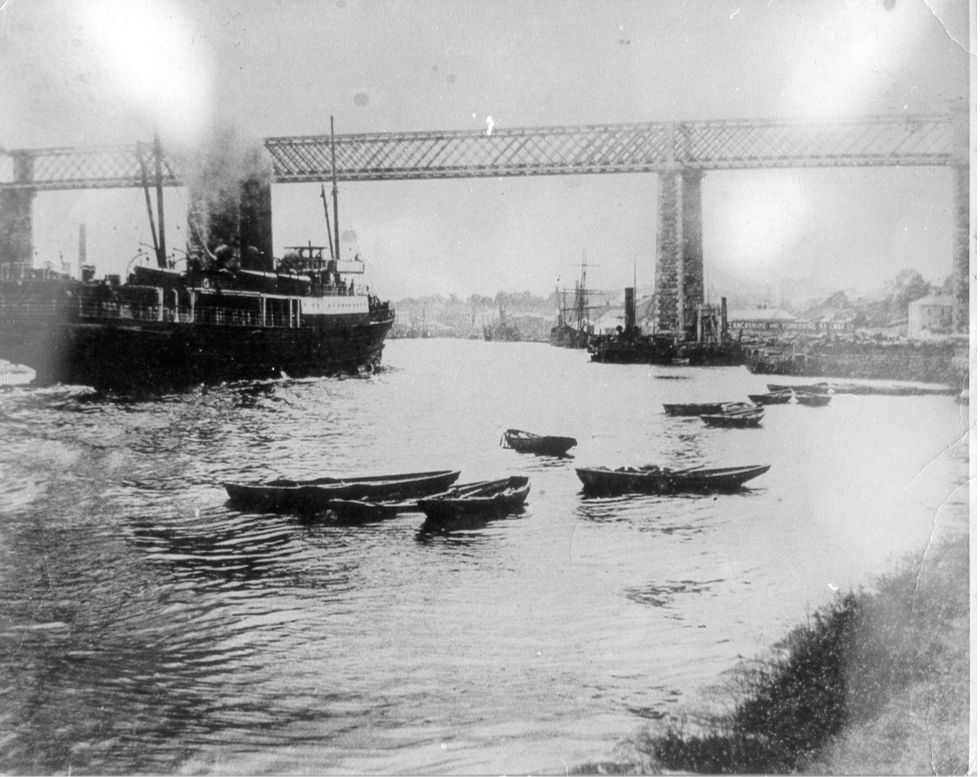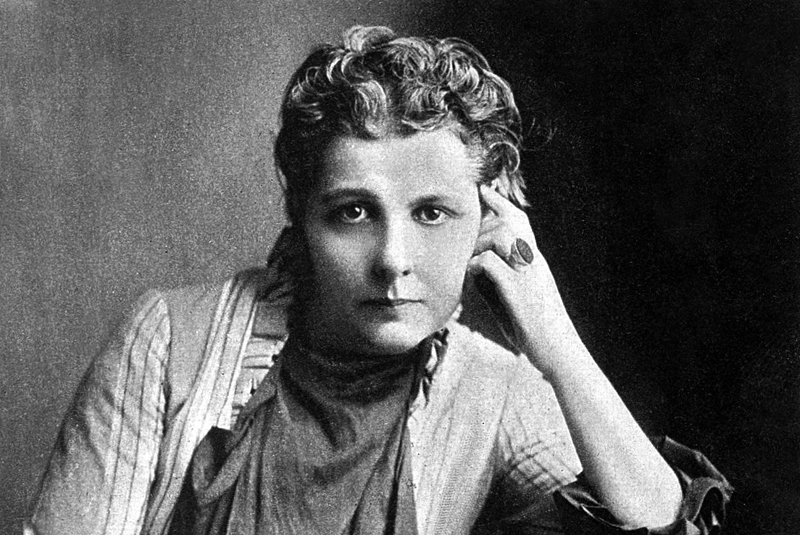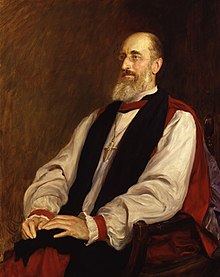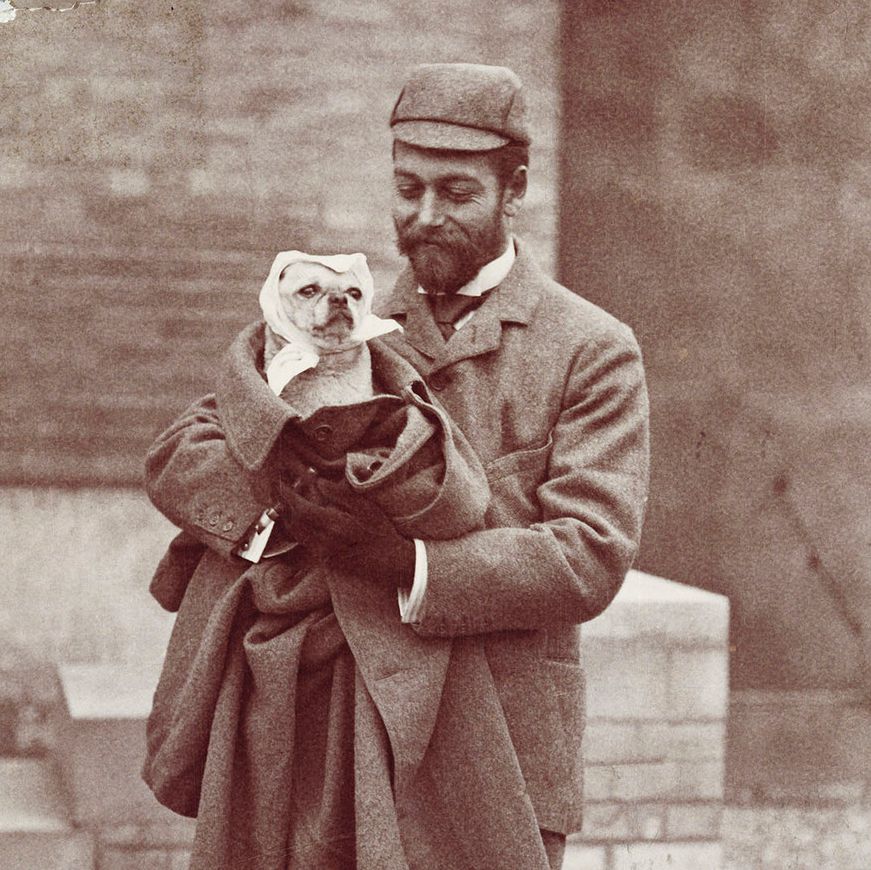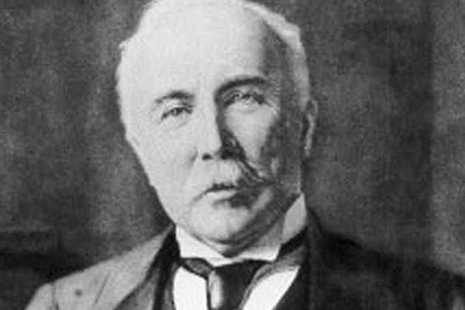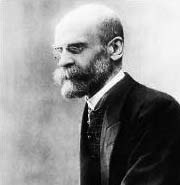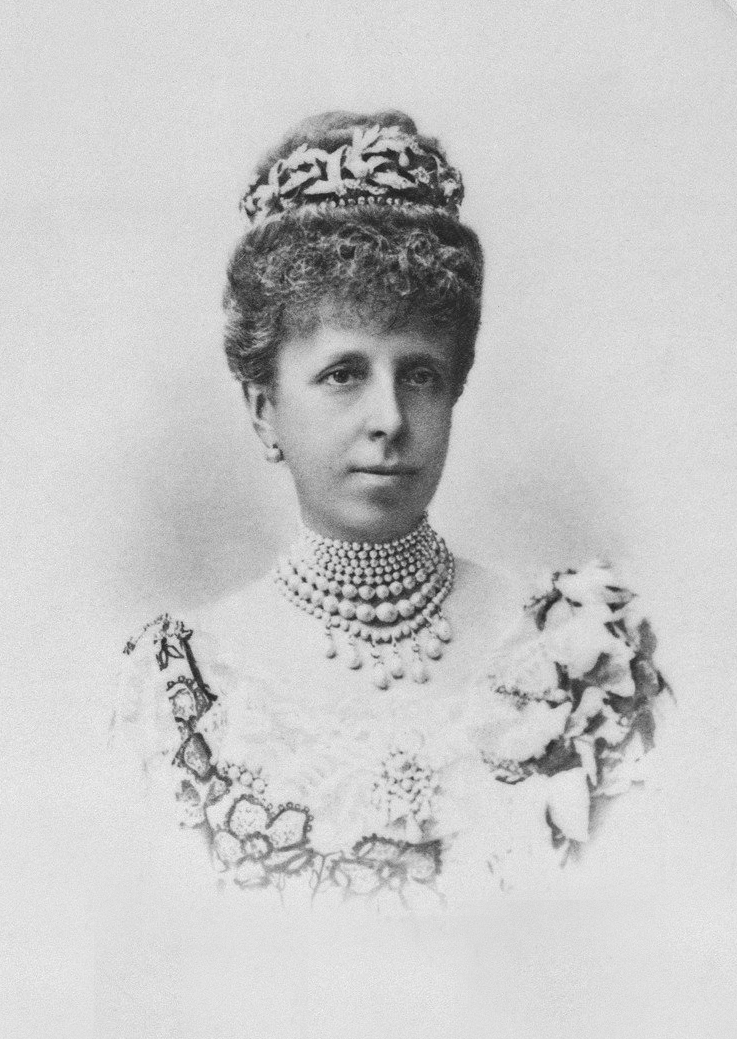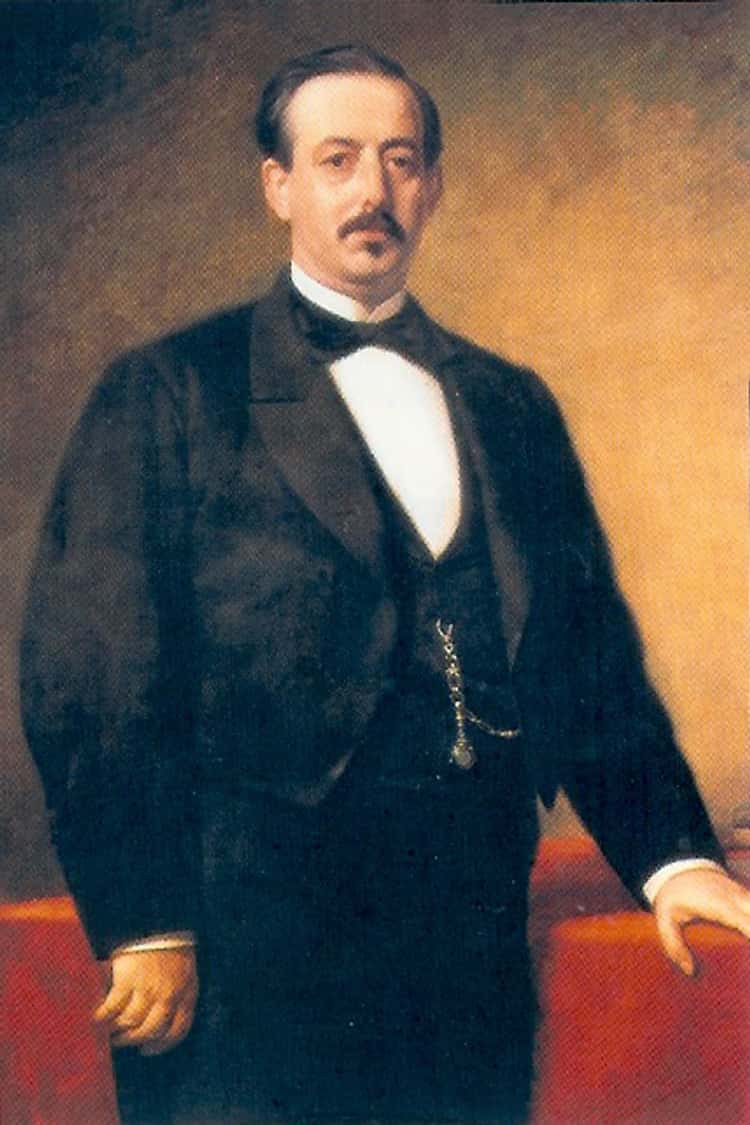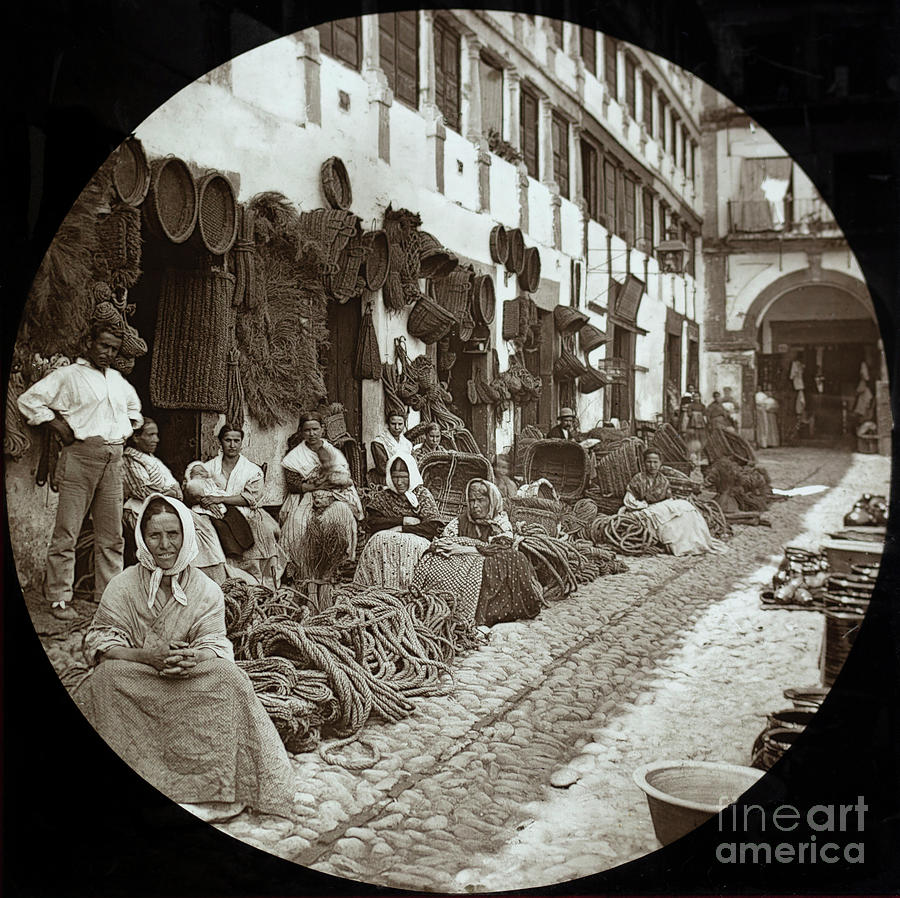V, LXIV: The Regeneration: Iberia 1894-1895
Manuel Zorrilla, the first President of the Iberian Federation (1894-1895)
The concept of “Great Man Theory” is a discredited and disliked concept amongst historians, but there are a few exceptions, a few times in which one figure seizes a nation and pulls it in the direction of their choosing. Manuel Ruiz Zorrilla is one such exception. A man who decided to change the direction of a nation and pull it in the direction of his choosing.
Upon the winds of change, throughout 1894, Iberia embarked on a journey from the ashes of its tumultuous past toward the promise of a rejuvenated future. A nation of nations, once fragmented by civil unrest and marred by the scars of external invasion, stood on the precipice of transformation, its destiny unwritten, teetering between the legacy of turmoil and the dream of renewal. It was a time when the spirit of Iberia, resilient and defiant, sought not just to heal but to reimagine itself under the banner of regenerationalism.
This reimagination was spurred in near totality by Zorrilla. His party, the Democratic Party, remains a giant in the Federation; his constitution remains the structure of the state; his commitment to ideology encapsulating plurinationalism and civic patriotism remains a key facet of the mood of the Iberian state. His death was a body blow to Iberia, but his greatest legacy was that his creed remained after he left, carried out by the party he created.
The federation went through that journey and emerged with a renewed sense of self, an organisation that has lasted to this day, and a spirit of plurinationalism that transcended borders. Marked by conflict and dislocation, Manuel Zorrilla stood above the parapet of consensus in the Federation and dared to make a significant pitch to Iberia: I will reconstitute the Federation, and make it work.
"Out of the shadows of our strife, we carve the path to our renaissance," Manuel Zorrilla once proclaimed, his voice echoing through the hearts of Iberians far and wide. This declaration became the anthem of a movement that envisioned an Iberia reborn, a federation united not just by borders but by a shared aspiration for prosperity, justice, and harmony.
Part 1 - The Need for Recovery
At the end of a long and brutal two decades, marked by civil war and invasion, Iberia was a landscape marred by the ravages of relentless societal upheaval. Once a vibrant tapestry of cultures and traditions, the peninsular found itself weathered by the storms of war and migration.
By 1893, the scars of nearly two decades of turmoil had profoundly altered the essence of this proud region. Spain and Portugal, nations that had together boasted a population of 21 million souls in the year 1873, now cradled only 19 million within their borders. The exodus was stark, with waves of emigration bleeding the peninsula dry of its lifeblood, leaving behind a realm shadowed by loss and uncertainty. The peninsular had lost its colonies, lost its pride, and lost its sense of direction. Seeing the ruin of the conflict, many begun asking whether it was all worth it.
The French invasion had exacted a heavy toll, claiming the lives of 65,000 of the country’s citizens. Following the tumultuous overthrow of the monarchy, Portugal mourned the departure of the O Expulsos, 90,000 in total, to the distant shores of Brazil, a number which swelled by a further 100,000 in the ensuing years. The monarchist flight to Equatoria, a desperate bid for a new beginning, further syphoned the wealth and expertise that once flowed through Iberia. Financially ruined, politically chaotic, the writer Herman Melville travelled to Iberia in 1892 and witnessed the destruction, talking of Madrid as “a city half built, a people half dead.”
Prior to the war, Catalonia stood as a solitary hub of industrialisation, but its factories and foundries too were dimmed by the shadows of conflict. Positioned on the very frontlines of the Spanish Civil War and the subsequent Franco-Iberian War, the region bore the brunt of devastation, its output crippled to a mere 45% of its pre-war output. The blockade of traditional trade routes, particularly with France, forced a reliance on the export of agricultural goods to nations like Italy and Britain, a meagre substitute for the emerging commerce of yesteryears.
Rope and basket weavers, Cordoba, 1895
In search of a solution, the government of Spain, then Iberia, attempted to build self-sufficiency in the face of its status cut off from the world and its own colonies. The Iberian government's attempt at Autarky was thwarted by an undeniable dependence on British imports. The vital streams of gold and foreign currency, once the lifeblood of the economy, had been depleted, spirited away amidst the chaos of war, looting, and extraction by the retreating Monarchists. British banks, with Barings leading the charge, extended loans in a gesture of support, but the tightening noose of a global economic downturn caused by the Second French Revolution made repayment an Herculean task.
Agriculture, the ancient backbone of the Iberian economy, thrived anew under the stewardship of these collectives. Teams of five to ten tended the land with a care born of collective ownership. Their voices, melded in democratic chorus, shaped the decisions that guided their labour. Management committees, elected with the solemn gravity of general assemblies, orchestrated the daily symphony of agricultural life, from the procurement of materials to the distribution of the harvest.
Yet, even as these communities strove to forge a path of self-reliance, the spectre of dependency loomed large. Catalonia's urban centres, once the heart of Iberian industry, now mirrored the communal ethos of the rural collectives in their management of goods and services. However, the dream of autonomy was tempered by the reality of a nation still tethered to the imports that flowed from Britain's shores. Throughout this period, the challenges of rebuilding Iberia spilled into the political arena, heralding an era where the battle for the nation's soul would be fought not just in the fields but within the hallowed halls of power.
Part 2 - The Ideological Maelstrom
This political battle emerged from the undercurrents of economic turmoil, manifesting as a deadlock that threatened to paralyse the Federation's resurgence. As Iberia emerged, battered and bruised from the fires of revolution, its corridors of power became the stage for a fierce battle of ideologies. The birth of the Democratic Federation of Spain (FDE) marked a new chapter, yet the ink was barely dry before the nation found itself ensnared in political deadlock. The halls of the Federal Congress, where the future of Iberia was to be forged, echoed not with unity but with the discord of divided factions.
The era, optimistically dubbed the "Era of Good Feelings" for its brief respite between Republican unification and the Civil War's end, belied the simmering tensions beneath. The Pact of Pamplona, intended as a cornerstone of unity, instead became a symbol of the unresolved fissures within the coalition, leading to a political stasis that permeated the air like a dense fog.
At the heart of this deadlock was a pivotal disagreement over the nation's economic future. The Anarchist FRE-AIT faction, fervent in their pursuit of collectivization and worker control, stood in stark opposition to the Federal Republican Democratic Party (FDRP), of which Manuel Zorrilla, the outlying element within the ruling Junta, was a prominent member.
Zorrilla was a tolerated, respected, opposing political figure to the anarchist and socialist founders of the Federation. He had grown concerned with the state's direction. More accurately, both were concerned about the directionless nature of the state since the retreat of the French. He had felt the pain of loss during the war - his wife had been killed in 1891 during the defence of Catalonia, and this had spurred his passion for the Republican project. Some called him a broken man after the loss of his wife, but his loss had allocated his full attention to the health of the Federation.
Emilio Castelar, Second President of the Democratic Party
Zorrilla, advocating for a synthesis of market-based economics within the new framework, found himself at a crossroads, his voice a lone call for moderation in a sea of extremism. Time was of the essence for the 61 year old in 1894 - his health had been deteriorating, but that didn’t stop his vigour. He was determined to leave a better peninsular than the backward, declining power he was born into.
"The path to prosperity lies not in the extremes but in balance," Zorrilla argued, his words resonating in the hallowed halls of Congress, yet falling on ears divided by ideology.
Zorrilla also advocated for policies that recognised the intrinsic value of individual religious beliefs while firmly supporting the separation of church and state. He envisioned a federation where the free exercise of faith went hand in hand with liberal governance, echoing his personal stance as a critical Catholic dedicated to the marriage of liberal and religious principles. Zorrilla, thus, sought to reduce the Church's overt political power but not its spiritual presence in the individual's private life.
The emergence of the Federation of Spanish Workers (FTE), later renamed the Federation of Iberian Workers (FTI) following Portugal's integration, introduced a new actor to the political theatre. It provided a platform for more nuanced debate, though the shadow of the FRE-AIT loomed large, especially in the rural heartlands and the industrial bastions where memories of the revolution and the struggle against foreign domination were still fresh.
The debates extended into the realm of agriculture, where the future of Iberia's breadbasket hung in balance. The insistence on decentralisation by the FRE-AIT clashed with calls for a semblance of central oversight, a debate that mirrored the broader ideological chasm and threatened to undermine the very fabric of Iberian economy. The FRE-AIT remained a formidable force thanks to its support among rural peasants and militant industrial workers, many of whom had fought the Centralised Republic and the French, who hailed it for the transfer of land after the revolution.
Amidst these turbulent debates, the Turno Pacífico system, a mechanism designed to rotate leadership among the Federation's key figures, became a symbol of the political inertia gripping the nation. As Commissioner Pi and General Llunas took their turns at the helm, the absence of fresh ideas and solutions became increasingly apparent, leaving the populace yearning for change. Zorrilla was a beneficiary of this system, but felt it was stifling the natural creativity of the peninsular and its inhabitants. His work with the Junta brought him back into contact with an old friend and fellow traveller of the Republican movement, Emilio Castelar.
Castelar was a product of Revolution and has been a stalwart of the revolutionary movement, present since the radical movements of the 1860s. He had taken a backseat in the current government, but was a keen member of the Federal Congress. A fan of Byron, he was considered an outstanding orator, and one of the key members of the moderate republican movement. A liberal democrat, he was ostracised by much of the Federation’s elite during the early days of the conflict, mainly for his association with the centralised republic, but as the years passed, he became influential and critical of the nature of the structure of the Federation.
A key factor of the state was its decentralised nature, but many now believed it was too disorganised, too decentralised, and too weak to protect itself. The unorganised and chaotic administration of the state meant there were many different classifications of subdivisions in the Federation. Three republics - Catalonia, the Basque Regions, and Portugal - held additional power and were fiercely autonomous. While each province, city, and region had its own junta, the jurisdiction and scope of each varied, and their powers were undefined. Some were well organised, like Madrid and the nations, while some were less so, like many primarily rural cantons.
The Universal, the governing document of the Federation, outlined the relationship between the Federation, cantons, and juntas, but not the respective jurisdictions of each layer of government. The only principle, subsidiarity, meant that the most local functional layer of government should deal with any issue. With a weak court, the Commission of Common Justice, which had little enforcing power in disputes, arguments between local, cantonal, and federal politicians were common. All these issues with the founding principles of the state were to be remedied, the two saw, and this could not be done with the help of the Anarchists.
It was in this climate of stagnation that Manuel Zorrilla and Emilio Castelar, two figures once on the peripheries of Iberian politics, began to emerge as voices of reason. Zorrilla, with his history as Prime Minister of the Centralised Republic, and Castelar, whose defection marked a pivotal moment of unity, shared a vision of a more organised, centralised federation capable of defending itself and charting a course toward stability.
"Iberia stands as a state of great metropolises and vast wilderness engulfed in chaos," Castelar lamented in a speech in 1893, encapsulating the sense of disarray that plagued the Federation.
Their critique was not just of the present but of the very foundations upon which the Federation was built. The Universal, the document meant to guide the Federation, was silent on the intricate balance of power between its constituents, leading to a labyrinth of jurisdictional disputes and inefficiencies.
As Zorrilla and Castelar navigated the complex political landscape, their resolve hardened. The Federation's salvation, they believed, would not come from the anarchistic principles that had birthed it but from a new vision of governance, one that embraced the necessity of strong leadership and a unified direction. Amidst the cacophony of voices and the clash of ideologies, their mission was clear: to forge a new path for Iberia, one that would lead it out of the shadows of conflict and into the light of a promising future. The political impasse, ripe with discord, laid bare the need for a new vision, a unifying force that could rise above the fragmented discourse and chart a course for Iberia's regeneration.
Part 3 - The Birth of Regenerationalism
Enter regenerationalism, the philosophy championed by Castelar, Zorrilla, and their contemporaries, poised to infuse the Federation with the vitality it desperately needed. In the wake of a tumultuous era, as Iberia steadied itself on the path to recovery, a profound dialogue about its future began to unfold. The call to arms for this new chapter was sounded by none other than Emilio Castelar, whose late 1893 proclamation of "self-organisation" and "regenerationalism" reverberated through the corridors of power in the burgeoning Iberian state. It was a clarion call to fortify the nation against the spectre of foreign domination, to weave the fabric of a resilient and self-sufficient Iberia.
Castelar, a visionary with his gaze firmly fixed on the horizon, understood that while the Federation had been shaped by the fires of rebellion and conflict, its institutional framework remained a patchwork quilt of reactionary measures. "We have built a state in the image of defiance," he mused, "yet now, in the absence of a common enemy, we find ourselves at a crossroads. Must we not endeavour to sculpt a lasting edifice from the clay of our collective aspirations?"
The waning threat of French aggression, under the more conciliatory Keufer premiership, provided a much-needed respite, a moment of calm that Castelar, alongside Manuel Zorrilla and José Francos Rodríguez, seized to advocate for sweeping reforms. Through the editorial pages of Zorrilla’s popular newspaper, El Globo, they championed a vision of Iberia renewed, shedding the oppressive legacies of land inequality, ecclesiastical dominance, and oligarchic governance. Yet, they contended, such transformation necessitated a departure from the anarchy of decentralisation towards a more unified, centralised governance model.
"This Federation, this remarkable construct of our collective will, stands as a beacon of hope," Zorrilla penned in a passionate editorial. "Yet, to navigate the tempests of the coming century, we must anchor ourselves in principles that transcend the mere absence of conflict. Self-sufficiency, neutrality, respect for the myriad voices that compose our nation, and a commitment to strength — these are the pillars upon which our future must be built."
Zorrilla's reflections struck a chord, resonating deeply with an emerging middle class and a new generation of thinkers disillusioned with the dogmas of the past. They envisioned Iberia not as a singular, monolithic entity but as a vibrant mosaic of identities — a "nation of nations." This ethos of pluranationalism formed the core of Zorrilla's regenerationalist philosophy.
The battle-scarred landscape of Iberia, having endured over a decade of internal strife, yearned for unity and purpose. The regenerationalist movement, therefore, did not seek to erase the distinctions between Catalans, Basques, Portuguese, and Castilians but to celebrate them within the cohesive framework of a reimagined Federation. "In our diversity lies our greatest strength," proclaimed Lucas Mallada, echoing the sentiments of fellow supporters like the Portugese Republican, Teófilo Braga, Joaquín Costa and Ángel Ganivet.
Teófilo Braga, leading member of the Democratic Party of Iberia
This vision of reform and renewal found international admirers as well. Notably, the Liberal Democracy Party (LDP) in Britain saw in Zorrilla and his movement a reflection of their own aspirations. Herbert Gladstone, upon visiting Iberia, lauded the regenerationalists: "Here lies a patriotic endeavour not to dismantle but to build, to foster institutions that will stand as a testament to the resilience of the Iberian spirit." Such endorsements only underscored the universal appeal of the ideals that Zorrilla and his compatriots espoused.
As the Federation stood on the cusp of monumental change, its architects — driven by a shared vision of progress, unity, and resilience — embarked on a journey to redefine the very essence of Iberia. In their words and deeds, they laid the foundation for a new era, one rooted in the lessons of the past but reaching boldly into the future. As the regenerationalist movement gained momentum, its ideals would soon be put to the test in the crucible of public opinion: the impending elections."
Part 4 - The Defining Election of 1894
The year 1894 was not just another notch on the timeline; it was the moment when the ideals of regenerationalism would face the ultimate trial by fire—the judgment of the people in a defining election. The dissolution of the Federal Congress set the stage for an election that promised to be the most defining moment since the Federation's inception. Across the sprawling landscape of Iberia, from the bustling streets of Madrid to the tranquil villages dotting the countryside, the air was thick with speculation and hope. Manuel Zorrilla, embodying the call for radical reform, stood poised against the established order represented by the FTI, signalling a pivotal showdown that would chart the course of the nation's future.
"The atmosphere in Madrid is electric, almost chaotic," observed a New York Times correspondent, painting a vivid picture of the pre-election scene. "The city's squares teem with passionate orators, their voices merging into a cacophony of ideals and aspirations, while the ground is littered with the remnants of fervent pleas for progress."
In response to the overwhelming clamour of public discourse, Zorrilla and his allies embarked on a strategic campaign to engage the populace directly. They wove through the dense fabric of Iberian society, from the heart of bustling metropolises to the serene solitude of rural hamlets, sharing their vision of a rejuvenated Federation. "Our journey is not just through the streets of Iberia but into the hearts of its people," Zorrilla declared, as he rallied his supporters to disseminate their message of reform.
Faced with the challenge of widespread illiteracy, Zorrilla embraced the symbol of the cat, a nod to the broader movement toward moderate democracy that was gaining momentum worldwide. "In this emblem, we find our shared identity—a creature known for its independence, yet part of a greater community," he mused, symbolising the delicate balance between individual freedoms and collective responsibility that he envisioned for the Federation.
As the election unfolded over the span of four weeks, a wave of anticipation swept across Iberia. The people's verdict was resoundingly clear—a mandate for change, for an end to the old ways and the dawn of a new era under the banner of regenerationalism. As the citizens of the cantons and nations headed to the poll, one thing became clear - Zorrilla and the moderates had secured an unassailable faction in both houses of the Federal Congress. The victory of Zorrilla's faction was not just a political triumph but a seismic shift in the ideological landscape of the Federation.
In the wake of this electoral landslide, Zorrilla addressed the newly convened Federal Congress with a resolve that echoed through the annals of Iberian history. "Today, we stand at the threshold of a new epoch. With your support, we embark on the noble task of rebuilding the Federation," he proclaimed, his voice resonating with the weight of the moment. While Zorrilla was expected to attempt to govern with the other members of the Pactist Coalition, with the wind blowing firmly in his direction, at the first meeting of the Federal Congress, he made a firm attempt to seize control.
After it was clear that support for his unilateral reforms would be enough to secure a majority in both houses, he told the joint session that he intended to withdraw from the Pactist Coalition, seek a motion to dissolve both the JEC and CCS and elect a new, pro-reform slate of candidates on both bodies. The JEC and CCS would be given the powers to propose a new constitution and pass economic reforms to fulfil the promise of regenerationalism. His supporters cheered him on, while opponents of his reforms and supporters of the current system, including Commissioner Pi, were incredulous. Zorrilla pleaded for Congress to pass his reforms as quickly as possible, believing his ministry would not be eternal, and the window for reform would eventually close.
Cartoon of Zorrilla in a Spanish-language newspaper
When the Supervisors brought Zorrilla's motion to a vote, it was passed by a margin of 138-67. Thunderous cheers filled the congress hall. Later that day, the members who voted in favour met on the steps of the Congress. Led by Zorrilla, Braga, Castelar, Mallada, Costa, and Ganivet, they declared the formation of a new political party in Iberia: The Democratic Party.
As a broad-based political movement, the Democratic Party represented a coalition of moderates, reformists, and progressives united under the banner of regenerationalism. This new political force aimed to transcend the ideological divisions that had previously fragmented Iberian politics. "Let this party be the crucible in which we forge a brighter future for all Iberians," Castelar stated, encapsulating the spirit of the movement. "Our program will be the foundation upon which we build a society that honours our past while boldly stepping into the future," he declared, setting the stage for a transformative era in Iberian history.
This period of reform and renewal, marked by the emergence of the Democratic Party and the leadership of visionaries like Zorrilla, Castelar, and their compatriots, heralded a new dawn for Iberia. A dawn where the ideals of regenerationalism would illuminate the path towards a unified, prosperous, and equitable Federation. With the election concluded and the people’s mandate clear, the true work of regeneration lay ahead, ready to transform political success into tangible progress.
Part 5 - Crafting the New Constitution
The electoral triumph was the catalyst that unleashed a cascade of reforms, initiating a period of intense transformation across the fabric of Iberian society. Following the election, sweeping reforms were initiated by Manuel Zorrilla and his Democratic allies. Iberia underwent a period of profound transformation that reshaped its political, economic, and social landscape. These changes, while controversial, marked a significant departure from the anarchic and decentralised system that had characterised the Federation in the wake of the French invasion and subsequent conflicts. The focus on economic revitalisation, political restructuring, and international engagement set the stage for a new era in Iberian history.
Zorrilla's first task was rewriting the federal constitution. Completed in December 1894 and ratified by referendum in January 1895, the new constitution established a new legislature, the Central Council, a President elected by the legislature, and an Executive composed of legislative members. This streamlined governance model aimed to reduce the political deadlock and foster more efficient decision-making.
Supporters celebrate the passage of the Constitution
Cantons would provide input on federal legislation by sending a member to the Federation Council, which would be given the power of review and a suspensive veto on all legislation passed by the Central Council. These members wouldn't have permanent mandates but would consist of a delegation which could be changed between meetings.
For legislation to become law, the Central Council and President would need to consent to its passage, while the Federation Council could only delay legislation, and if the Central Council rejected amendments made by the Federation Council, the Central Council could pass the legislation unamended again. Despite this, the body would have an absolute veto on constitutional changes and legislation that affected the power of the cantons. One of the pivotal aspects of the constitution was, for the first time, a clearly delineated sphere of powers for cantons and juntas - ending the practice of implied powers and subsidiarity.
The constitution also reformed and strengthened the judicial branch, enumerated civil rights across the Federation, and gave the newly established Supreme Court of Iberia the power of judicial review, appointed by the President on the recommendation of the Central Council. It also redefined the roles of cantons and juntas, providing a clearer delineation of powers and responsibilities across different levels of government. Three levels of government were established: the Juntas at the base level, the cantons at the state level, and the Federation. Some Cantons were structured differently, mainly to incorporate nationalities or major cities.
Cantons comprising one city or locality were dubbed "Cantons and Juntas," essentially merging the two levels of government into one. These were Asturias, Baleares, Madrid, La Rioja, Murcia, Cartagena, and Navarre, uniquely named the Chartered Canton and Junta of Navarre. The second difference was the national republics, known as "Republics and Cantons," these were Catalonia, Euskal Kantonamendua (Basque Community), Andalucia, Galicia, Valencia, and Portugal, which was reunited under a single government. However, the reforms retained referendums and initiatives within the constitutional framework to continue public participation in the political process. The new constitutional framework was only the beginning; the regeneration of Iberia would demand a bold economic realignment to bring prosperity back to its people.
Part 6 - A New Prosperity
As Zorrilla’s government turned its focus from the laws of the land to the livelihoods of its citizens, the landscape of Iberia's economy braced for groundbreaking changes. Zorrilla's government furthered the development of Iberia by implementing policies allowing private enterprises to resume operations, marking a shift towards a mixed economy. He loosened the restrictions on cooperative industries by allowing private individuals to own multiple businesses, provided the board contained worker representatives on the board. This move, coupled with the Investment Plan of Autumn 1894, aimed to attract foreign investment, signalling Iberia's openness to global economic participation after agreeing to loans from German and British banks.
Zorrilla’s reforms extended to the realm of education, deeply informed by his conviction that an enlightened populace was the bedrock of a vibrant democracy. His government prioritised the establishment of secular educational systems that empowered citizens with knowledge, while permitting religious institutions to participate in the educational landscape under liberal standards. It was a delicate balance, reflective of Zorrilla's commitment to nurturing an informed society that could uphold the tenets of a progressive republic.
The establishment of the Bank of Iberia in January 1895, a federal mint, and the introduction of the Unidad/Unidade in January 1895 as the new federal currency was a critical step in economic normalisation. Pivotally, Castelar organised a gold purchase to back the currency with gold in exchange for a share of future exports. It eased trade, increased confidence, and stimulated investment within and beyond Iberia's borders.
The Infrastructure Plan launched in March 1895 focused on rebuilding and expanding transportation networks, utilities, and public services, laying the groundwork for sustained economic growth and integration into the global economy. Mallada and Castelar worked to make the Iberian treasury viable and looked to raise revenues to invest in the economy. This included trade deals with Italy, Britain, and Germany in 1895, opening up foreign investment in the country. Castelar also established a state monopoly on alcohol sales to raise funds and export wines and spirits for export, used foreign loans to increase the country's railway network and allowed the federal government and cantons to cooperate to launch irrigation schemes and canal improvements to stimulate agriculture.
The transition towards Zorrilla's reforms was fraught with contention. At the municipal and cantonal levels, debates raged between those advocating for preserving communal farming practices and proponents of economic liberalisation. In rural areas, the shift away from collectivised agriculture was met with resistance, particularly from communities that had flourished under the previous system. Stories of heated town hall meetings, where farmers clashed with reformist officials, encapsulate the human dimension of this ideological struggle. The path to modernisation, it became clear, was paved with disputes over the soul of Iberian society.
The public's reception to Zorrilla's reforms was a tapestry of support, scepticism, and outright opposition. The FTI's eventual endorsement of the reforms came after intense internal deliberations, reflective of a broader societal debate over the direction of the Federation. Despite his initial misgivings, Pi came to understand and appreciate the reforms, for instance. The radical left, including the FRE-AIT and radical FTI members, viewed the reforms as a betrayal, organising protests that underscored the deep divisions within Iberian society. This opposition was not merely political but also a reflection of a society grappling with its identity and future in the wake of upheaval.
Still, the economic reforms, while ambitious, had mixed outcomes. In rural areas, the transition from collectivised to mixed economies led to an initial increase in unemployment as the market adjusted to new dynamics. However, by 1896, as the world stepped into the onset of the Turbulence, agricultural output stabilised, growing at an annual rate of 2.7% as diversification efforts took root. Introducing private enterprise spurred innovation and highlighted the disparities between urban and rural areas. Inflation, a looming spectre in the initial years, was gradually tamed by the stabilisation of the Uni, named as an abbreviation of Unidad and Unidade, meaning unit, leading to a more predictable economic environment.
With economic strategies taking shape, Zorrilla understood that enduring change also needed a stable political environment—one that would emerge from yet another realignment.
Part 7 - Political Landscape Transformed
The aftermath of economic restructuring set the stage for another significant shift: a political realignment that would secure Zorrilla’s vision and pave the way for the Federation's future. With the new constitution passed, Zorrilla announced the dissolution of the Federal Congress and all cantonal and municipal bodies for a further election on April 3rd, 1895. The election saw a victory for the Democratic Party and after the Central Council met, Zorrilla was elected as the first President of the Iberian Federation.
Seeking to entrench the cooperative spirit of the revolutionary period, prior to the election Zorrilla approached Pi and senior members of the Federation of Iberian Workers about forming a "Grand Coalition" after the election. With the results confirmed, Zorrilla was able to convince a number of the members of the FTI to go along with his plan, and to sweeten the deal, former-commissioner Pi became the first President of the Council of Ministers, akin to the Prime Minister, and the new government featured an even split between Democratic Party and FTI members.
When the Central Committee of the FTI refused to back the coalition agreement, Pi led the parliamentary members of the group out of the FTI and, in May 1895, founded the Workers Party of Iberia, which brought with it moderate trade unions and left the radical workers, most notably the mining unions in the north of the country and industrial workers in Catalonia, outside the governing coalition. The trade unions that allied with the government formed the UGT (Unión General de Trabajadores/União Geral dos Trabalhadores), which those opposed to the government formed the Federació Local de Societats Obreres (FLSO), emerging from the reconstitution of the FRE-AIT.
The FLSO adopted a focus on direct action and community organising outside the parliamentary framework and did not sponsor Central Council candidates until 1898. Since Keufer's takeover of France, the FLSO began to ally itself with the growing Left-Actionist movement and eventually formed the Communist Party of Spain in 1900. While some members continued the AIT as a group opposed to the reforms, the appetite for outright stateless anarchism fell as an era of cooperation reigned supreme.
Zorrilla just before his death in 1895
It was under Zorrilla's stewardship that the Federation witnessed an opening towards a more inclusive approach to religion in public life. He spearheaded legislative initiatives that ensured the protection of religious freedoms, offering reassurance to the devout that regenerationalism did not equate to a denial of faith. This approach aimed to dismantle fears and build a bridge between progressive state policies and the diverse spiritual tapestry of Iberia.
The period of reform also catalysed a cultural renaissance in Iberia. As political and economic landscapes shifted, so too did the realms of art, literature, and public discourse. A surge of creative expression reflected the redefinition of national identity, emphasising inclusivity and diversity. Artists and writers, inspired by the tumult of recent history, explored themes of resilience, unity, and hope.
The cultural renaissance under Zorrilla’s era also reflected his liberal yet conciliatory approach to religion. His administration fostered an atmosphere where religious and secular voices alike could contribute to the burgeoning public discourse. This was emblematic of Zorrilla’s broader vision for a Federation that championed both the advancement of secular ideologies and the respect for religious diversity, aiming to sculpt a societal ethos that was enlightened yet inclusive.
The church's role, diminished in public life, gave way to a secular society more reflective of Iberia's pluralistic reality, but the new government attempted to court the Catholic Church with less restrictions and a softer line of secularisation. The integration of Portugal expanded the Federation's cultural tapestry and reinforced the notion of Iberia as a "nation of nations," celebrating its regional identities while forging a unified national narrative.
With his power base secure and the country modernised and reformed, Zorrilla would now seek to secure the federation's borders by approaching the old enemy of the Federation, France, with a peace treaty. To his surprise, Zorrilla found Keufer willing to entertain such a suggestion, and the two would meet in December 1894, although the consequences of the peace treaty would have profound ramifications for Keufer, Iberia, and the world - as we will examine in the next chapter. As the new political landscape solidified, the era of regeneration entered its maturity, bringing forth a blossoming of Iberian culture and identity.
Part 8 - The Regenerated Iberia
The regeneration of Iberia was now a vivid reality, its multifaceted transformation resonating in every aspect of national life—from governance to the everyday lives of its people. The adoption of a new constitution marked the cornerstone of this era, ushering in a governance model poised to bridge the divides that had long fragmented the federation. It was a testament to the collective will of a people determined to forge a future that honoured the diversity of their identities while navigating the complexities of the modern world.
The strides toward economic revitalization, underscored by the strategic embrace of a mixed economy and the establishment of the Bank of Iberia, signalled a departure from the shadows of autarky. This economic renaissance, bolstered by international investment and a renewed focus on infrastructure, promised a future where prosperity was not just a vision but a tangible reality for Iberians from all walks of life. Yet, it was perhaps in the realm of culture that the true essence of Iberia's regeneration was most vividly realised. A cultural renaissance, fueled by the spirit of reform and the vibrancy of Iberia's diverse communities, blossomed. Artists, writers, and thinkers, inspired by the tumult and triumphs of their times, wove a narrative of resilience and hope, crafting a tapestry of creativity that reflected the soul of a nation reborn.
"In every stroke of the brush, every word penned, lies the heartbeat of our federation," mused Zorrilla, reflecting on the cultural awakening that paralleled the political and economic transformation of Iberia. It was a reminder that the journey of regeneration was not just about rewriting laws or revitalising economies but about nurturing the spirit and identity of a people united in their diversity.
As the fledgling dawn of a new Iberia broke, its chief architect, Manuel Ruiz Zorrilla, was suddenly snatched away by the relentless hand of mortality. His untimely demise in June 1895 sent shockwaves throughout the federation. The nation mourned, not merely for the loss of a leader but for the visionary spirit that had rekindled the flames of hope in a land long shrouded in uncertainty. Yet, even as sorrow cast its pall, the indomitable will of Zorrilla—etched in the very fabric of the Federation’s rebirth—promised that his dreams for Iberia would endure beyond the grave, his legacy immortalised in the march towards progress and unity. A new election was arranged upon his death and Pi was elected as the second President of the Federation, with Teófilo Braga becoming Prime Minister.
As Iberia stood at the dawn of this new era, its future remained a canvas of possibility, shaped by the hands of those who dare to dream. A canvas that would be impacted, but not destroyed, by the Turbulence.
